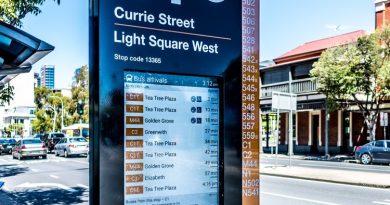Windsor: A Red-Hot Market Goes Full Steam Ahead On ADU’s
Just across the river from Detroit, Windsor, Ontario is perhaps Canada’s most-overlooked city. It’s diverse. It’s walkable and bikeable– well, sort of. And while Windsorites often look to Detroit as a cultural, geographic, and economic anchor, the city’s own, long-sleepy real estate market has blown up in recent years as the sky-high prices of the Toronto market drive residents toward the southwestern tip of Ontario.
This leads to the question about how, in the words of Handbuilt’s own Nat Zorach, the city plans to cram all that graham. The city’s population density is lower than what we city planning nerds think of as a proper city, but this is mostly because of how far out the suburbs of the city are within the municipal boundaries. Plus, Windsor inherits a lot of Detroit’s affinity for the motorcar, and therefore its preoccupation with surface parking lots as well. So, if there’s a limit to suburban sprawl (remains to be seen), real estate developers are, of course, looking to maximize values and density where they can. Enter the accessory dwelling unit, or ADU. You may also know them by their various other names, such as secondary suites, laneway suites, in-law, or “granny” flats.

The Point Of The ADU
These secondary dwellings are located on the same lot as the primary unit, but usually have to adhere to a few simple rules such as having a separate accessway, their own kitchen, bathroom, and other amenities. In Ontario, passage of the More Homes, More Choice act in December 2019 paved the way for the city of Windsor’s own ADU policy in May 2020. Working on the principle of residential intensification (densification), ADUs can help deal with the shortage of affordable housing. By permitting up to three units on a traditional single-family-home property lot, the new policy allows for a principle residence, a unit in the house, as well as a unit in a separate building. A number of developers are already starting to build such units, with what is claimed to be Windsor’s first detached ADU having broken ground on August 10.
Handbuilt’s Nat Zorach describes the win-win scenario thusly:
The really nice thing about doing an ADU is that a smaller building is going to be that much cheaper to build, but it’s still, at the end of the day, a full housing unit. You’re not putting a basement, you’re just doing [concrete] slab on grade and a pretty simple, stick-frame building. You might even put a garage in there. The finished product is that you’re able to add some new, hopefully half-decent, housing to a market that desperately needs it, while, at the same time, you’re potentially creating a nice revenue stream for rental income for the homeowner. Over a whole market, it really just becomes an alternative to building either out– like sprawl- or up, like some mid-rise or high-rise. You even out a little bit of the upward pressure on rents while ultimately creating a lot more value for property owners.
The ADU as Community Development Tool?
Challenges to the Trendiest New Thing In Density
However, it’s not all smooth sailing, as policy amendments have made certain types of ADUs harder to get approval for. The new policy outlawed detached ADUs which exceed the building height of the main building, which effectively made above-garage units illegal for the typical Windsor one-story bungalow homeowner. One Windsor planning nerd pointed out on Facebook that the province’s new law doesn’t make ADU’s legal by right, but rather empowers municipalities to enact regulation about ADU’s. Other opposition to ADUs include concerns by existing residents about the additional strain that will be placed on existing infrastructure such as transportation, parking access, and public space.
With Toronto’s astronomical real estate valuations pricing out a lot of smaller businesses and the young and mobile, Windsor has plenty of interest in new development. And with large employers such as (Detroit’s own) Quicken Loans opening offices and bringing more jobs to Windsor, there is a need for a great supply of affordable housing. To ensure that the ADU can become more a viable and affordable strategy for affordable housing and for urban development in general, the policy ambiguities and other concerns should be addressed as soon as possible.




